- Region
- Águilas
- Alhama de Murcia
- Jumilla
- Lorca
- Los Alcázares
- Mazarrón
- San Javier
-
ALL AREAS & TOWNS
- AREAS
- SOUTH WEST
- MAR MENOR
- MURCIA CITY & CENTRAL
- NORTH & NORTH WEST
- TOWNS
- Abanilla
- Abarán
- Aguilas
- Alamillo
- Alcantarilla
- Aledo
- Alhama de Murcia
- Archena
- Balsicas
- Blanca
- Bolnuevo
- Bullas
- Cañadas del Romero
- Cabo de Palos
- Calasparra
- Camping Bolnuevo
- Campo De Ricote
- Camposol
- Canada De La Lena
- Caravaca de la Cruz
- Cartagena
- Cehegin
- Ceuti
- Cieza
- Condado de Alhama
- Corvera
- Costa Cálida
- Cuevas De Almanzora
- Cuevas de Reyllo
- El Carmoli
- El Mojon
- El Molino (Puerto Lumbreras)
- El Pareton / Cantareros
- El Raso
- El Valle Golf Resort
- Fortuna
- Fuente Alamo
- Hacienda del Alamo Golf Resort
- Hacienda Riquelme Golf Resort
- Isla Plana
- Islas Menores & Mar de Cristal
- Jumilla
- La Azohia
- La Charca
- La Manga Club
- La Manga del Mar Menor
- La Pinilla
- La Puebla
- La Torre
- La Torre Golf Resort
- La Unión
- Las Palas
- Las Ramblas
- Las Ramblas Golf
- Las Torres de Cotillas
- Leiva
- Librilla
- Lo Pagan
- Lo Santiago
- Lorca
- Lorquí
- Los Alcázares
- Los Balcones
- Los Belones
- Los Canovas
- Los Nietos
- Los Perez (Tallante)
- Los Urrutias
- Los Ventorrillos
- Mar De Cristal
- Mar Menor
- Mar Menor Golf Resort
- Mazarrón
- Mazarrón Country Club
- Molina de Segura
- Moratalla
- Mula
- Murcia City
- Murcia Property
- Pareton
- Peraleja Golf Resort
- Perin
- Pilar de la Horadada
- Pinar de Campoverde
- Pinoso
- Playa Honda
- Playa Honda / Playa Paraíso
- Pliego
- Portmán
- Pozo Estrecho
- Puerto de Mazarrón
- Puerto Lumbreras
- Puntas De Calnegre
- Region of Murcia
- Ricote
- Roda Golf Resort
- Roldan
- Roldan and Lo Ferro
- San Javier
- San Pedro del Pinatar
- Santiago de la Ribera
- Sierra Espuña
- Sucina
- Tallante
- Terrazas de la Torre Golf Resort
- Torre Pacheco
- Totana
- What's On Weekly Bulletin
- Yecla


- EDITIONS:
 Spanish News Today
Spanish News Today
 Alicante Today
Alicante Today
 Andalucia Today
Andalucia Today
article_detail
Spanish News Today Editors Roundup Weekly Bulletin July 18

TOP STORY: "A week of anti-immigration unrest in Murcia" & "Massive earthquake shakes all of southern Spain"
Well, it’s been another earth-shaking week in Spain. Quite literally, if you were around the southeast this Monday morning, but also due to the full week of inflammatory disturbances and violence seen by a small, unassuming town in Murcia which has made headlines around the world as the latest front of the culture wars as they revolve around the axis of immigration.
This was the week’s news in Spain:
The week that little ol’ Torre Pacheco made international headlines
Torre Pacheco, normally a quiet town in Murcia, has found itself in the national and international spotlight over the last week for all the wrong reasons.
Basically, it all started when a Moroccan lad beat up an elderly Spanish man and then scarpered. So far, just another violent crime that could happen to anyone, anywhere, and which do happen every day and in which both victim and suspect could be of any nationality.
But what began as a senseless act of violence quickly spiralled into something far bigger and with wider-reaching consequences.
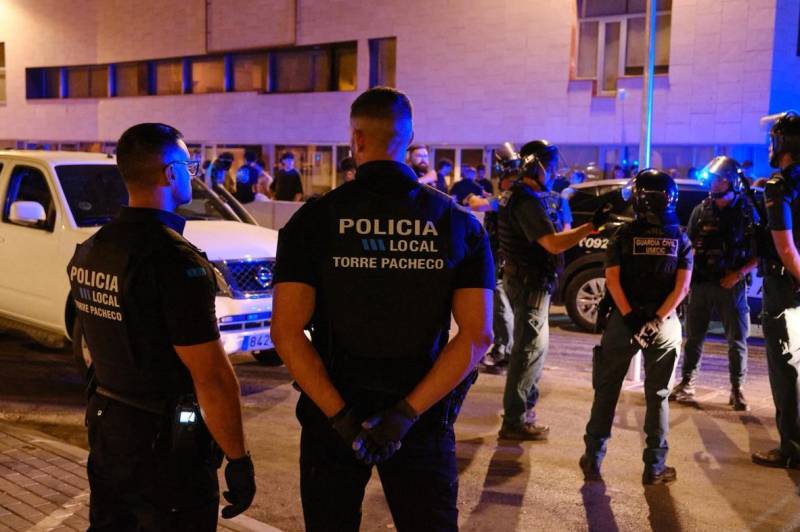
The assault itself was shocking, no doubt. Domingo, a 68-year-old Torre Pacheco local, was the victim of a brutal attack, and his assailant has since been arrested and remanded in custody.
But instead of allowing the justice system to do what it does, slowly and methodically, the incident was hijacked by a host of opportunistic far-right agitators who flooded the internet with misinformation, doctored videos and a cry for blood.
At the heart of this chaos was a viral video that supposedly showed Domingo’s assault. Except it didn’t. It was, in fact, footage of a completely unrelated homophobic attack on a homeless man in Almería months prior.
Not only was the video wildly off the mark, but it whipped people into such a frenzy that Torre Pacheco, a town where nearly half the residents are of foreign origin – whether Moroccans and Algerians in the town itself or Brits and Irish on the golf resorts like La Torre and Mar Menor – and where peaceful cohabitation has long been the norm, became a battlefield for other people’s politics.
Masked men (and they were all men) descended on one particular neighbourhood of the town, the barrio de San Antonio, shouting abuse and terrifying families who’d been living quietly and legally in the area for years.
For night after night, these right-wing rabble rousers took to the streets to cause mayhem, looking to literally “hunt a foreigner” and “kick all the immigrants out of our country”. Never mind that most of the people in the town are second- or third-generation migrants and have been there for decades as part of the community, living side by side for as long as anyone can remember, or cares to recall.
Shops were shuttered, losing local businesses money, and the air filled with smoke and discriminatory slogans. Police tried valiantly to regain control, with the number of officers on patrol eventually swelling to almost 100 over the course of the week. Riot units were called in – also from out of town because there weren’t enough local forces – and more than a dozen individuals were arrested.
And incredibly, most of these violent protesters didn’t even live in Torre Pacheco. They were bused in or made their way there from out of town, inspired via a group on the encrypted messaging app Telegram by a group with the unintentionally ironic non-Spanish name ‘Deport Them Now Spain’. I mean, if you’re against foreign influence, surely you should name it ‘Échalos ya’ or maybe ‘Somos tontos’.
Anyway, this group had been openly inciting violence online, calling for a “hunt” and even sharing names and addresses of supposed “illegal immigrants” alongside neo-Nazi symbols and propaganda.
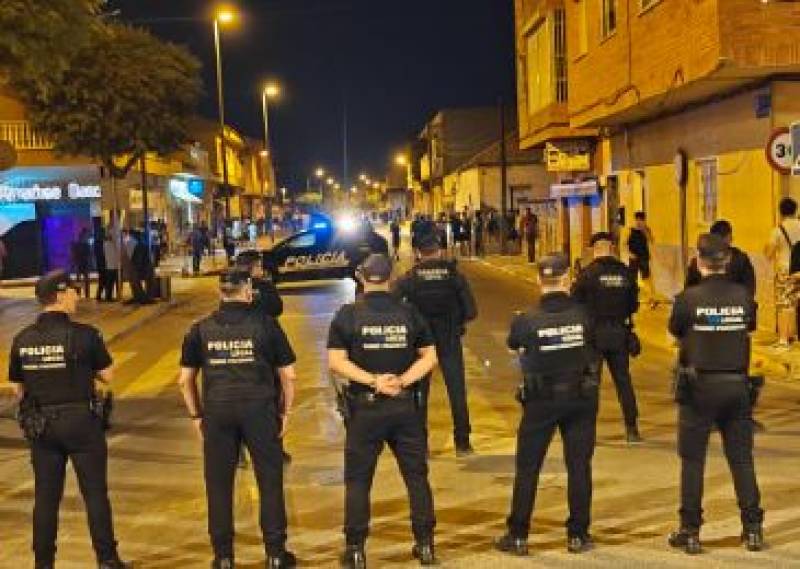 The Telegram group was shut down and the lead agitator running it was taken into police custody in Barcelona, from where he was pulling the strings from a safe distance of over 400km.
The Telegram group was shut down and the lead agitator running it was taken into police custody in Barcelona, from where he was pulling the strings from a safe distance of over 400km.Politicians on (almost) all sides denounced the violence and called for added police presence to stop the shameful behaviour.
But, of course, not all political responses were created equal, and the regional leader of the Vox party turned up to a rally and declared boldly, before hotfooting it out of there, that “not a single one will remain,” referring to immigrants. Not, one presumes, to the people bussed in to stir the pot in the first place.
Legal minds are now looking into whether Vox politicians could face criminal charges for hate speech and incitement to violence. The national PP party has distanced itself from Vox, vowing not to form a coalition with them if (when) they get into power. Remember they said that because they could be eating their words in a couple of years’ time.
While non-pachequeros stirred up hate and trouble (you could even say they were ‘foreigners’ to the town, ironically), local residents both Spanish and foreign just wanted something very simple: peace and calm. Safety. The freedom to walk their children to school or visit the local shop without fear of being targeted by people who watch too many YouTube conspiracy videos.
After almost a week of unrest, traders are now starting to open their doors again, cafés are serving cortados, and the mood, while fragile, is tilting towards recovery.
But the scars will take time to heal. The fake news, the incitement, the chants and the threat of violence have left a mark. Many residents now face a lingering fear, not of their neighbours, but of the next wave of misinformation that could upend their peace yet again.
In fact, this is bigger than Torre Pacheco. The events of this past week have shown that anywhere can become a crucible in a matter of days. The story of Torre Pacheco has become something larger: a case study in how one crime, exploited by extremists and amplified by technology, can destabilise an entire community.
Unfortunately, the words ‘Torre Pacheco’ will now become a byword for the rest of Spain not for Mar Menor tourism or a silly-but-fun Melon festival, but instead for civil unrest, social breakdown and a failure to address concerns over the growing immigrant population in the country.
For now, the town watches and waits. Police continue to patrol the streets, just to be sure. And those who live there – who know that the only real answer to violence is coexistence – hope that Torre Pacheco can go back to being what it has always been: a small town where people, regardless of origin, are just trying to get on with their lives in peace.
The day the Earth did not stand still
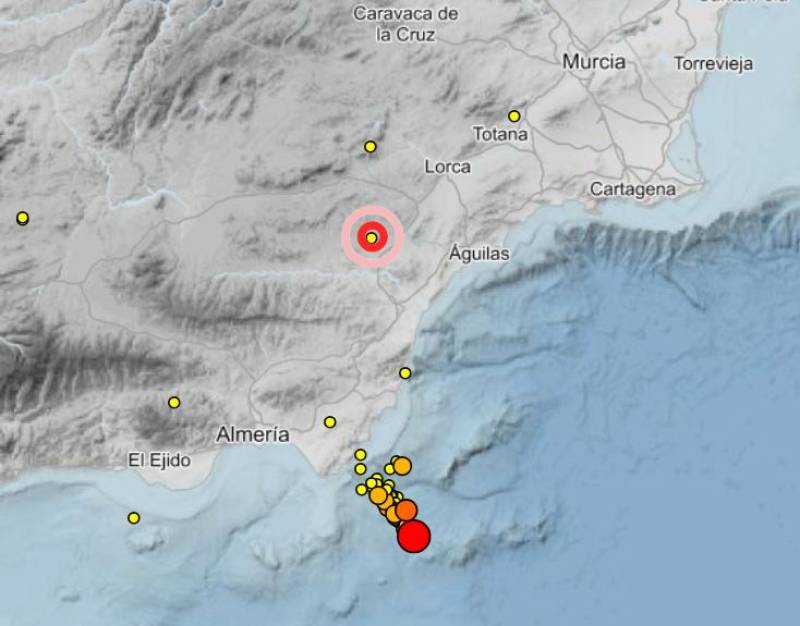
Well, if Monday morning wasn’t already hard enough to face, southern Spain decided to throw in a little extra excitement in the form of the strongest earthquake to hit Almería in nearly a century.
At precisely 7.13am on Monday July 14, a 5.4-magnitude quake in the waters off southern Spain (so technically a seaquake, not an earthquake) rattled windows, jangled crockery and delivered a rather unpleasant wake-up call to anyone sleeping lightly enough to be shaken by it.
Centred just off the eastern coast of Almería, in the Mediterranean Sea, the quake struck at a shallow depth of just 3 kilometres. People across Almería, Murcia, Granada and Málaga reported that sickening, slow-motion rocking sensation in their tummies that gets you wondering whether you’re having a dizzy turn, dreaming or are about to be crushed under a falling bookcase.
This was followed, over the space of the next four hours or so, by a series of aftershocks measuring between a polite 1.6 to a more noticeable 3.4 on the Richter scale.
Of course, anyone who has been here for long enough will tell you that earthquakes are nothing new in this part of the world. The Spanish coast sits on top of a tectonic fault line that is constantly throwing up little tremors, most of which are so small they go unnoticed.
But not this one. It was, according to the National Geographic Institute, the strongest tremor in Almería since 1930.
As for actual damage, mercifully, it was mostly of the structural and superficial variety. No injuries were reported, though Almería airport did get a bit of an unexpected skylight when part of the roof decided it no longer fancied the job and collapsed.
Emergency services rushed in, assessed the situation and thankfully confirmed that everyone remained in one piece: mildly shaken, perhaps, but not stirred.
It’s worth repeating here that, while earthquakes can be destructive – people in Italy in 2009 and 2016, Morocco in 2023 and Lorca in 2011 will attest to that – the truth is that small, frequent tremors are nature’s way of letting off steam. Better lots of little rumbles than one great big ‘surprise’.
Let’s hope it stays that way.
Dog days aren’t over
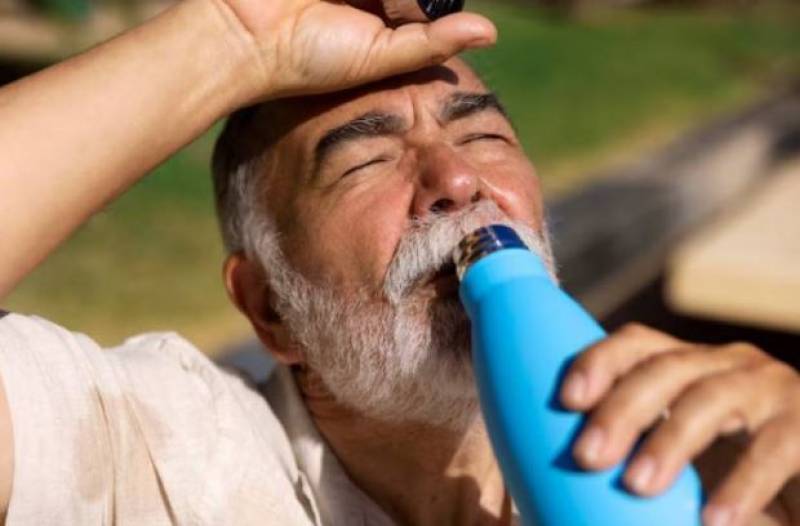
As Spain enters the traditionally hottest stretch of summer this week, the country is already grappling with the devastating consequences of what meteorologists are calling “a thermal episode of exceptional intensity”.
Tuesday marked the beginning of the so-called ‘dog days’ of summer, that sweltering period between July 15 and August 15 when both day and night temperatures reach their most punishing levels.
The timing couldn’t be more concerning, given that extreme heat has already claimed 1,180 lives across Spain between May 16 and July 13 this year. That's a staggering ten times more than the 114 heat-related deaths recorded during the same period last year, according to Spain’s Ministry of Health.
Meteorologist Nacho Espinós explained that the dog days create a perfect storm of atmospheric conditions.
“At that time, the sun is still shining very strongly, and the ground, already overheated after many weeks of accumulated heat, intensifies the thermal effect on the atmosphere,” he said.
Clear skies, calm winds and a constant blanket of warm air higher up work together to trap heat and prevent it from dissipating, especially at night.
And the numbers just seem to be going up and up. June alone saw an average temperature of 23.6ºC, breaking the previous record set in 2017 by 0.8 degrees and sitting a full 3.5 degrees above the 1991-2020 average.
In just the first week of July, heat-related deaths jumped by 47% compared to June, and if current patterns continue, July is set to become another record-breaking month.
Perhaps most telling is the dramatic increase in official weather alerts. The authorities have issued 76 red-level warnings for extreme heat in the past two months alone. Last year during the same period, not a single red alert was activated.
The human cost is particularly heartbreaking. Of the 1,180 deaths reported, 95% were individuals over the age of 65, with almost 60% being women. The Ministry of Health attributes this gender split to women making up a larger share of the senior population.
Ten additional deaths from confirmed heat stroke have been reported since Spain’s national heat response plan was activated earlier this year.
Interestingly, some of the hardest-hit regions have been places like Galicia, La Rioja, Asturias and Cantabria, areas that typically enjoy milder summers. The Ministry of Health believes this points to “climate vulnerability” since they were completely unprepared for such scorching temperatures.
As we settle into the dog days with their promise of daytime highs above 35ºC and those dreaded tropical nights where temperatures refuse to drop below 20ºC, meteorologists warn that climate change is making these episodes not just more extreme, but more frequent and longer-lasting.
With plenty of summer still ahead, Spain faces a challenging few weeks as communities struggle to adapt to this new reality of relentless heat.
Murcia
Property now, and the latest statistics from Spain’s National Statistics Institute show a rather impressive 57.2% increase in home sales in the Region of Murcia this May compared to the same month last year. That’s a respectable 18% higher than the national average. In Murcia in May, 2,422 lucky souls bought their dream villa or apartment, with new builds making up 533 of these, while the rest were resale properties.
It seems that rising house prices can’t stop the real estate freight train, and in terms of nationality, the Germans, it seems, are now edging the British out of the top spot for the number of mortgages handed out to foreigners.
Corvera Airport, not to be outdone in the ‘things that are unexpectedly thriving in Murcia’ category, has also seen a gentle but reassuring bump in passenger numbers. Over 404,000 people passed through its gates in the first half of 2025, most of them international visitors.
 The airport has recently unveiled a swanky new duty-free area, or rather, two: one aimed at gourmands and one for people with a sweet tooth or a desperate need to buy a cuddly toy because they’ve forgotten to get a present for the grandkids they’re flying back to see.
The airport has recently unveiled a swanky new duty-free area, or rather, two: one aimed at gourmands and one for people with a sweet tooth or a desperate need to buy a cuddly toy because they’ve forgotten to get a present for the grandkids they’re flying back to see.The airport manager Aena poetically stated the new duty-free area is all part of a grand plan to “enhance the passenger experience… with an attractive design in line with current airport trends”, which really just means “you now have to walk through an aromatic corridor of Carolina Herrera samples and Toblerone to get to your gate”.
Not content with merely feeding and perfuming its customers, the airport has also taken the progressive step of installing toilets specially adapted for travellers with ostomy bags. It seems someone’s got money to pump into the airport all of a sudden.
Meanwhile, down on Calblanque beach, volunteers with the Territorio Tortuga 2025 project stumbled across the first loggerhead turtle nest of the summer, carefully laid just a little too close to the tide for comfort.
Environmental officers stepped in to relocate the clutch of eggs to safer sands, thus improving the odds for dozens of baby turtles who will hopefully make it to the sea without being stepped on by an unsuspecting hiker.
This is the third year running that Calblanque has hosted nesting turtles, meaning it’s becoming something of a preferred maternity ward for these endangered marine animals.
Not far inland, however, things are rather less idyllic. In Camposol, two fires in two separate green waste areas in the space of just a few days have caused panic amongst local residents… and Mazarrón Town Hall, too, it seems.
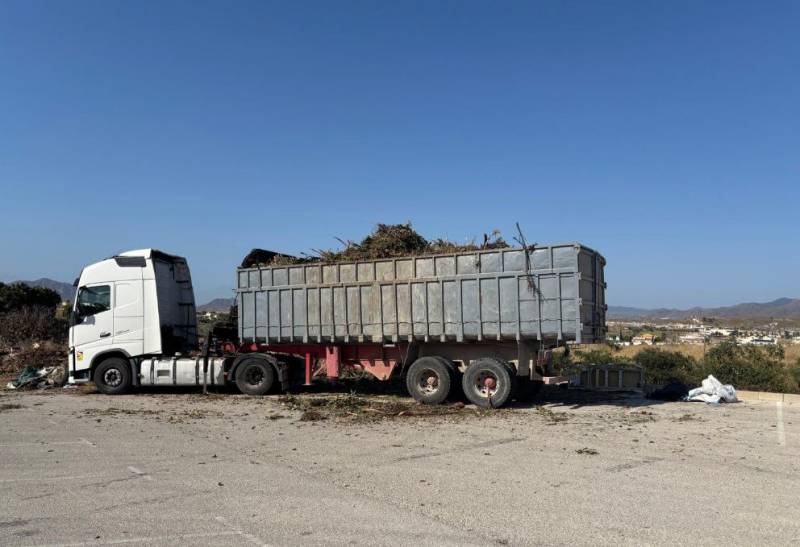 The Council has finally begun clearing some of the waste, starting with B Sector, taking away refuse by the lorryload to be sorted and disposed of at a processing plant. While progress will be slow to clear all of the existing waste sites, there is hope as new signs have been put up warning of fines that could reach up to €12,000 for anyone dumping fridges, sofas or building waste on the green site, and shiny new CCTV cameras installed to try to catch any offenders in the act.
The Council has finally begun clearing some of the waste, starting with B Sector, taking away refuse by the lorryload to be sorted and disposed of at a processing plant. While progress will be slow to clear all of the existing waste sites, there is hope as new signs have been put up warning of fines that could reach up to €12,000 for anyone dumping fridges, sofas or building waste on the green site, and shiny new CCTV cameras installed to try to catch any offenders in the act.A report by firefighters on the recent fires which broke out point to the possibility of these being the work of an arsonist, perhaps someone who wanted this issue of how dangerous these waste sites are to get them sorted once and for all. Or maybe it was a case of spontaneous combustion, as others allege. Either way, it seems progress is finally being made, albeit at a pace somewhat akin to watching grass grow.
The latest news coming out this Friday afternoon is of another fire in a rubbish dump in Puerto de Mazarrón, this one spilling over into neighbouring forest land and forcing authorities to evacuate homes just in case. Three fires in Mazarrón garbage tips in the space of just nine days? It seems too coincidental to be a coincidence...
If you’re looking for something to do this summer, Taquilla Tickets has offers on everything from wine tasting on the Mar Menor to cultural day trips, flamenco dinners and even a jaunt to Gibraltar. Their itinerary offers a welcome summer escape from the dream life in the sun. All trips come with full insurance. Check out the full gamut and book in your preferred trip here.
Otherwise, you’ve got romantic dinners for two in the fantastic setting of Lorca castle happening all this July and August, a guided tour in English of the town of Alhama de Murcia next Tuesday or a chance to see the Dutch Royal Military band playing in Yecla and Jumilla next week.
See the EVENTS DIARY for more events and activities coming up soon around the Region of Murcia:
Spain
There’s good news and bad news on the grocery front this week. The good news is that Spain’s beloved olive oil has finally become affordable again, with prices plummeting by nearly 50% since their peak in April 2024. The bad news? Pretty much everything else is getting more expensive.
Spain’s inflation jumped to 2.3% in June, the highest since March, driven largely by the ongoing conflict in the Middle East pushing up fuel and food costs. Overall grocery prices rose by 2.8% last month, with meat, fish and seafood leading the charge upward.
But let’s focus on that olive oil victory for a moment. Remember when buying a bottle felt like a luxury purchase? Those days appear to be over, thanks to better harvests and government VAT cuts that brought the tax rate down from 10% to as low as 0% last year. The government is understandably pleased, calling it a success story of “stable and moderate prices”.
The relief comes just in time, too. Households across Spain have watched their grocery bills balloon by up to 35.5% over the past three years, making any price drop genuinely welcome news. Sugar is also down 19.3% over the year, while yogurt, cereals and even pizza have become a bit cheaper.
On the flip side, chocolate lovers are feeling the pinch with prices up 21.6%, coffee has jumped nearly 20% and eggs are 18% more expensive. Poor harvests in producing countries and supply chain issues are largely to blame.
The mixed picture reflects broader economic pressures, according to USO trade union leader Joaquín Pérez. “Do we really think we’ve regained purchasing power? Either we act on prices or we act on wages,” he said. It’s a fair point, especially with consumer debt hitting all-time highs.
For now, families in Spain are probably just grateful that one kitchen staple won’t break the bank anymore. Whether that olive oil relief can offset the rising costs elsewhere remains to be seen.
The Guardia Civil has dismantled a criminal network that turned Spanish airports into their personal duty-free shopping centre, making off with around €223,000 worth of high-end perfumes and cosmetics.
Operation Simba Free began after security at Tenerife South noticed suspicious coordinated behaviour in restricted shopping areas back in May. What started as a few odd incidents turned out to be a sophisticated criminal network operating across multiple Spanish airports including Madrid, Málaga, Bilbao and several Canary Islands locations.
The scam was brilliantly simple: buy cheap flights with no intention of boarding, breeze through security into the departure zones, stuff expensive perfumes into shopping bags and walk out.
At the heart of it all was a young woman from the Canary Islands who acted as the ringleader, coordinating jobs and assigning roles. Perhaps most troubling, the group recruited minors and vulnerable individuals, paying them to participate in the thefts.
The months-long investigation has resulted in 66 arrests, with 18 more people under investigation and three minors identified. Officers have recovered more than €70,000 euros in stolen merchandise.
There’s been a bit of a blow for employees throughout Spain as it looks increasingly unlikely that the legislation needed to reduce the official working week from 40 hours to 37.5 will be ready before the end of the year.

The Ministry of Labour has just postponed the debate about it until the end of the summer. The main problem is the Catalan party Junts, which has been against the idea from the start. They’re worried about the impact on small businesses and say Catalans are “hard workers” who don’t need shorter hours. One party spokesperson even called the measure “going around begging”.
Despite months of talks with Labour Minister Yolanda Díaz, Junts isn't backing down. They want more time to negotiate and demand the law reflects all their concerns about protecting small businesses.
The government’s recent corruption scandals aren’t helping either. While the Ministry of Labour still hopes to reach a deal eventually, Spanish employees will have to keep working their full 40-hour weeks while the politicians sort it out.
Alicante
The saga of whether a barely 60-metre section of the coastal path in Orihuela belongs to residents of an urbanisation or should be a public right of way has dragged on for more years than most people have even lived in the area.
Although the national Coast Law and the PGOU Municipal Town Plan established that it was public in 1990, the housing had been approved before these and the land was never expropriated by the town hall.
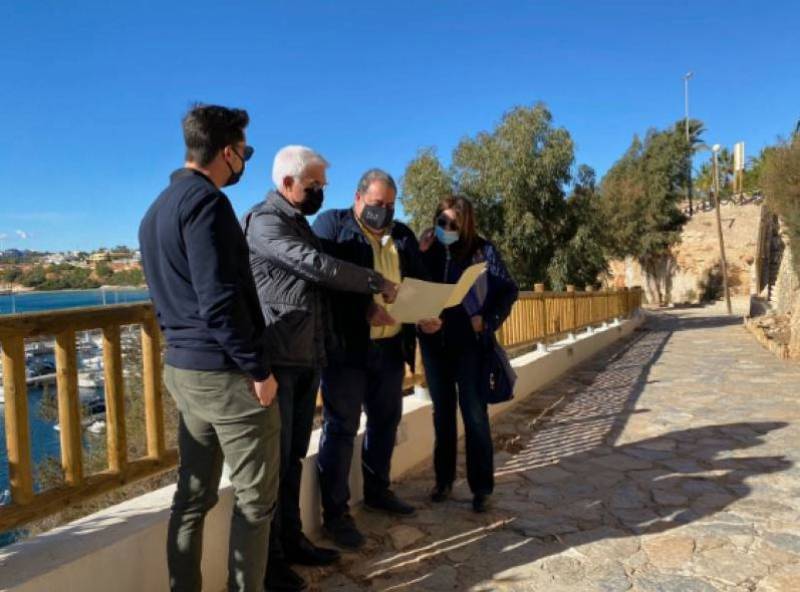 This little bit of path, between Aguamarina and La Caleta beach, was last opened by the City Council in 2015, but has been closed off since 2021, when residents annoyed with hundreds of people walking past their gardens won a court case and forced it to be closed off again for their own private use.
This little bit of path, between Aguamarina and La Caleta beach, was last opened by the City Council in 2015, but has been closed off since 2021, when residents annoyed with hundreds of people walking past their gardens won a court case and forced it to be closed off again for their own private use.Since then, anyone hoping to walk along the clifftop path has been forced to take a two-kilometre detour around the back of the housing just to get back to the coast.
The next council then tried to forcibly expropriate the land, and an expropriation jury decided that a fair price to pay for it was €26,180, far less than the landowners had been seeking.
However, the residents refused to sign the document to accept the offer and the council has gone back to the courts for advice on how to proceed.
The council had been hoping to reopen the path this summer, and has budgeted €38,305 to demolish the walls at each end, lay paving and install street lighting, but now it seems the residents will be able to enjoy their privacy at the expense of the general public for a little while longer.
A grisly discovery was made by a swimmer in the sea in the Cabo de la Huerta area of Alicante city this Monday. The body of a man was found floating face-down in the water at about noon, naked apart from a pair of flip flops.
Police investigating the death commented that there were no signs of violence on the body, other than some abrasions and bruises that were probably caused by it bumping into the rocks.
They were awaiting the results of an autopsy to determine the cause of death and try to establish the man’s identity.
 And another mystery has flummoxed Guardia Civil, residents and local authorities in the Vega Baja village of Jacarilla, where a British woman disappeared without a trace on May 30.
And another mystery has flummoxed Guardia Civil, residents and local authorities in the Vega Baja village of Jacarilla, where a British woman disappeared without a trace on May 30.75-year-old Janet Fison had lived in the town since 2007, and went for a drink with her husband at a local bar on that fateful night.
He said that when they got home, she told him she wasn’t feeling well, began to prepare dinner and then suddenly left without warning. Her husband assured she had not taken a phone, any money or identification, and nor had she left a note.
The only possible clue was a witness who reported seeing her walking near the River Segura at around 8.40pm that evening, wearing a brown floral dress and heading towards Benejúzar.
A major search operation was launched over the following days, involving police, volunteers, helicopters, drones, sniffer dogs and thermal cameras, but they could not find a single lead.
The Guardia Civil say the investigation is still open, but have not ruled out a voluntary disappearance. With just over 2,000 residents, the community in Jacarilla has been shaken by Janet’s sudden vanishing, since she and her husband lived there all year round.
Mayor Andrés Moñino said, “They were registered as residents, came to our local festivals and were always around town… Sometimes they went back to the UK to visit their children, and other times the children came here.”
Now, more than 40 days later without any news, the town is filled with sadness and confusion.
“It’s as if the earth has swallowed her up,” added the mayor.
Andalucía
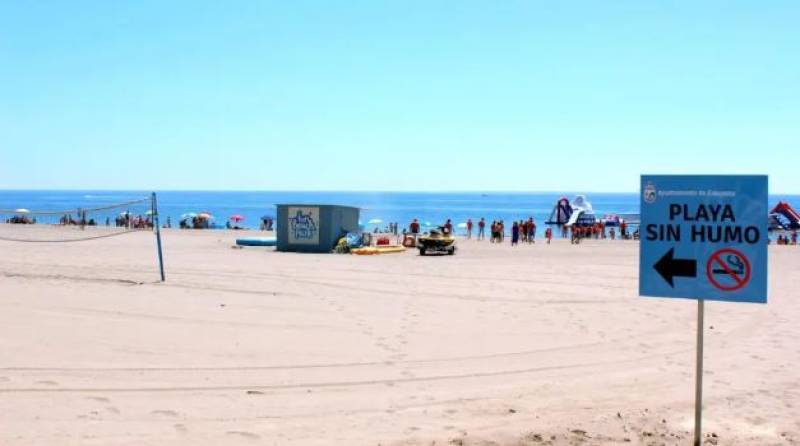 Andalucía is leading the way in Spain’s push for healthier public spaces, expanding its smoke-free beach and pool initiative to more than 150 locations this summer. First launched in 2019, the scheme now includes 58 smoke-free beaches and 93 public pools across 29 municipalities. The idea took off in the years following the Covid pandemic, when public health became a major focus for local councils.
Andalucía is leading the way in Spain’s push for healthier public spaces, expanding its smoke-free beach and pool initiative to more than 150 locations this summer. First launched in 2019, the scheme now includes 58 smoke-free beaches and 93 public pools across 29 municipalities. The idea took off in the years following the Covid pandemic, when public health became a major focus for local councils.Cádiz and Málaga have the highest number of designated smoke-free beaches, while Jaén and Seville lead the way when it comes to public pools. Motril’s Playa Granada was the first to join the scheme, and now towns from Almería to Huelva have followed suit. The aim is to reduce exposure to second-hand smoke, keep public spaces cleaner and raise awareness about tobacco use.
Although there are currently no fines for lighting up in these areas, local councils have the power to impose penalties if they wish. The regional Health Promotion Service is also relaunching the campaign’s website to help more towns join and raise public awareness. The number of participating locations has risen steadily over the years, but officials hope to give the campaign a fresh boost this summer to counter a slight slowdown in growth.
If you’re planning a trip to the beach or pool this summer, it might be worth checking the list to see if your chosen spot is on the smoke-free map.
While beachgoers look forward to fresh air and clear skies, train passengers between Seville and Malaga will have a bit more traffic to navigate in August. Renfe has announced that it will be laying on 102 replacement buses from Friday August 22 to Sunday August 24 as improvement works take place on the rail line.
The construction, managed by infrastructure firm Adif, will affect all medium-distance trains on the route and is aimed at boosting the line’s hydraulic capacity. A total of 34 train services will be impacted over the three days. To keep things moving, buses will run the full route between Seville and Malaga, including all intermediate stops, with the exception of Bobadilla and El Chorro-Caminito del Rey. For these two stations, passengers will be offered taxi transfers.
Anyone travelling to or from Bellavista, Virgen del Rocío, Álora and Las Mellizas will still be able to use local Cercanías trains. Renfe has said it will continue to update passengers through its website and station notices. While a little inconvenient, the temporary switch is part of a long-term effort to improve rail reliability and infrastructure across the region.
Meanwhile, along the coast in Roquetas de Mar, a rather more distressing travel scenario unfolded, this time for a marine visitor in trouble. Last Sunday, a common dolphin stranded itself on the beach for the third time, prompting urgent action from the animal rescue group Equinac.
Despite being nearly two metres long, the dolphin was weak, injured and struggling to breathe. With no immediate response from regional authorities, and a vet reportedly being dispatched from another province, Equinac made the tough call to intervene directly. Their own vet and two marine experts assessed the animal and decided that the most humane action was euthanasia.
Equinac explained, “When these animals beach, it is because they are sick and unable to follow their group. They are mammals and need to breathe air. Reintroducing a stranded dolphin is like pushing a drowning person back into the sea after they’ve managed to reach the shore.”
From one coastline to another, we wrap up this week’s roundup in Málaga, where the city has officially withdrawn from the list of 2030 World Cup host cities. The reason, says Mayor Francisco de la Torre, is to protect the interests of Málaga CF and its thousands of fans.
This decision was confirmed last Saturday, with the mayor citing concerns over the cost and disruption of upgrading La Rosaleda stadium to FIFA standards. The works would have cost an estimated €270 million and forced the local team to relocate to a much smaller venue.
“Choosing between the World Cup and the club, we choose the club and the fans. We are with Málaga,” the mayor said. While the city is stepping away from the World Cup spotlight, it hasn’t given up on football. Plans are still in place for a new stadium in the future, just not one tied to the 2030 tournament. The decision has sparked political debate locally, with some opposition members calling it a missed opportunity for Malaga on the global stage while others have applauded the authorities for putting local needs first.

You may have missed…
- Is it true that solar panels produce less energy in summer?
Have you ever noticed or been told that solar panels can produce less energy during summer? While it’s true that summer brings more sunshine hours, there are several reasons why solar panel performance might actually dip slightly during the hottest months! - Madrid wildfire scorches 3,000 hectares and forces mass evacuations.
A fire broke out this Thursday afternoon in Toledo, and within hours the flames had rapidly advanced toward the Madrid towns of Navalcarnero and Villamanta, creating a massive smoke column visible from the capital itself and forcing the evacuation of 50 people as a precautionary measure. - What to do if you fall ill while on holiday in Spain.
Falling ill or getting injured while on holiday can be a daunting prospect, especially in a foreign country where language and healthcare systems differ. Knowing what to do in a medical emergency or if a return home is required can provide peace of mind in a stressful situation. Enter medical repatriation, a service via land or air that takes care of all aspects of liaising with embassies, medical staff and transport professionals along the way. - Discover the Spanish towns that are home to the most foreigners.
Spain is approaching 50 million inhabitants, with the current figure standing at 49,153,849 to be precise. This growth is happening primarily because of foreign arrivals and the increase has affected all autonomous communities, including the cities of Ceuta and Melilla. But which place has the most foreign nationals of all? - These are the Spanish beaches that are welcoming dogs this summer.
Every year, thousands of people hit the Spanish coast in search of a beach and a refreshing, cooling swim. But it’s not just us humans who suffer in the sun; our furry friends feel the heat too and finding a dog-friendly beach can be a real headache for so many visitors. Here’s a handy list to help you out!
And that’s about all we can do for you this week. Rest assured there’ll be plenty more news next week, no doubt!
Have a nice weekend!
Contact Murcia Today: Editorial 000 000 000 /
Office 000 000 000
















